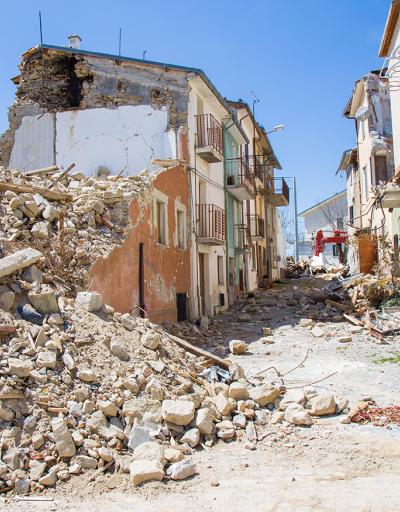
Education and school safety
While every child has the right to a quality and safe education, many children are unable to access this right due to the impact of disasters. Studies of disaster trends and the consequences of climate change show that each year, 175 million children are likely to be negatively affected by natural hazards leading to disasters. In this context, UNESCO is encouraging the integration of disaster risk education in school curricula in countries vulnerable to natural hazards and promotes the safe construction and retrofitting of school facilities to withstand risks.
Providing a safe learning environment
Schools should be one of the safest places where children can be. However, that is simply not the case for many children around the world. Climate change has increased the frequency and intensity of natural hazards, and existing educational infrastructures are often not adapted or able to withstand these rising threats. Inappropriate school facilities may have poorly constructed classrooms and playgrounds, insufficient or gender-insensitive toilets, or inadequate furniture, and their very location might make them more vulnerable to disaster when hazards strike. Furthermore, lack of Disaster Risk Reduction (DRR) education, combined with the vulnerability of school facilities, put students and teachers alike at risk.
Consequently, school safety has become a priority for many governments and non-governmental organizations. The issue of school safety has quickly gained recognition, and it is officially recognized by United Nations conventions and frameworks (i.e. the United Nations Convention on the Rights of the Child, the Sendai Framework for Disaster Risk Reduction, the 2030 Agenda for Sustainable Development, the Paris Agreement on climate change, the New Urban Agenda) that approach the issue from different perspectives.
What UNESCO does
UNESCO co-chairs the Global Alliance for Disaster Risk Reduction and Resilience in the Education Sector (GADRRRES), which is advocating for comprehensive school safety through the Comprehensive School Safety Framework 2022-2030. Through the Global Alliance, UNESCO is developing a culture of safety among students and education workers. The aim is to shift the emphasis from reactive policies to preventive methods in the educational sector. This approach encompasses not only the built environment but also practices which reduce risk and strengthen resilience.
Securing learning facilities
This objective is closely linked to UNESCO’s expertise in the built environment. In collaboration with the UNESCO Chair on Intersectoral Safety for Disaster Risk Reduction and Resilience (UniUD-SPRINT), the Visual Inspection for defining Safety Upgrading Strategies (VISUS) methodology was developed to identify the necessary actions for upgrading the safety of existing schools in a multi-hazard perspective, while reducing the time and costs of the safety assessment. The resulting assessment quantifies and prioritizes the safety upgrade needs of a large number of schools, for a region or country, to facilitate decision-making and investments.

Developing school disaster management
All educational institutions, regardless of size or location, must plan for natural hazards, disasters and emergencies. While it is impossible to plan for every scenario, UNESCO is actively engaged in empowering schools and their communities to identify the risks they are exposed to, in order to map their vulnerabilities and capacities to enhance school safety. Preparation is key to saving lives when a disaster strikes.
Disaster risk reduction, climate change and education
Ensuring continuous inclusive, quality and safe education for vulnerable communities

Education and school safety
UNESCO improves education for disaster risk reduction. Disasters are occurring at an alarming frequency and with increased severity around the world. Educating people and providing them with the information they need to save their lives, protect their communities and significantly reduce loss is vital, and the most effective way to increase community resilience. Disaster risk reduction in education equips people with knowledge and skills to reduce the impact of natural hazards by lessening the number of fatalities, limiting the amount of damages and decreasing disruption to economic, social and cultural activities.


